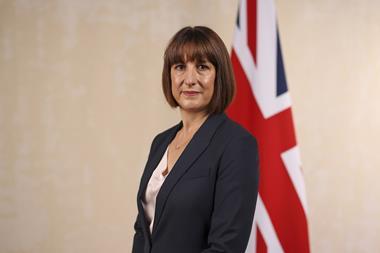EAT’s executive chef, Arnaud Kaziewicz, on keeping it simple but tasty, while watching out for new ingredients and innovations.
Arnaud Kaziewicz is obsessed with croissants. Since joining Eat, the Frenchman has been on a crusade to find a consistently good croissant – and failing. “I’ve been speaking to famous bakers and not-so-famous bakers,” he says, “and so far I haven’t found one that can give me a croissant that’s good every single day.”
“To do a vast amount of croissants is difficult because they can be overproved or they can be underproved,” he adds.“That’s why you tend to find that on the high street all of the croissants you buy are made by very large manufacturers. The likes of Delice de France and so on.
“I haven’t found the best supplier yet, but it’s something that I’m actively looking for.”
His high standards are understandable, considering that one of Kaziewicz’s previous incarnations was as founder of a croissant-making business in Bristol – a business he began in his home kitchen, selling his wares door to door. “I have an article at home describing me as ‘the croissant man,’” he laughs, noting that he was attracted to the pastry because it’s a beautiful product made from the simplest things.
That attitude seems like the perfect fit for Eat, a company that has built its success on tasty versions of simple items. When Food Spark speaks to Kaziewicz, he’s in the middle of preparing a menu refresh for summer. “We’re working on a porchetta and crackling baguette,” he reveals. “We’ve developed a porchetta with a butcher that is based in Leicester, and the crackling is very thin so it gives you a slight crunch. It’s not too dense and it’s not too fatty.”
Working with local suppliers is important to Kaziewicz, as is sustainability. Eat announced just last week that it has partnered with Toast Ale to turn its surplus crusts into craft beer. Around 1,040kg of leftover bread has so far been turned into beer, which will be sold at five of the food-to-go chain’s licensed premises.
“I think it’s important to have identity in what you’re trying to project,” he says,“and I think it’s important to do clever NPD, to use the right seasoning and use good products. Make them innovative, but still remember that you are developing products people are going to eat potentially every day.”
As he so astutely remarks, “Not everyone wants to eat a black brioche bun.”
My role at Eat has been to define what we do with our food offering, to make it more exciting but still keeping it approachable, so anyone can come to us and find something they like.
I’ve been spending a lot of time and effort finding better ingredients, finding better cheese, better bread, better leaves, looking at the seasoning, launching new products, new baguettes, new salads, new desserts, new drinks. Overall, my job has been to look at what we do at Eat and take it up to a different level.
Being French, I’m passionate about bread. I used to run my own artisan bakery, and I just find that you can’t find a decent baguette. You can find good baguettes if you go to Paul, you get a nice rustic baguette, but it’s quite difficult to eat, it’s chewy.
What I mean by a good baguette is a baguette that’s crunchy, fluffy, easy to eat and has a nice filling, something simple. And when I started at Eat, I went on a big search for that baguette. I went all around the UK, I looked at about 12 different types of baguette. And I found the right baguette in Belgium – in Belgium there are very good bakers, very good bakeries, but the wheat they use for flour is different, so it’s better for baguettes. I’m most proud about the baguette launch that we did, which was about three months ago.
We do a ham and cheese baguette where we’ve changed the cheese to a Jarlsberg, which is quite creamy and nutty and it’s very thin, and we’ve got a very nice beechwood-smoked ham, which is sourced from a butcher we’ve been working with for many, many years. The brine for the ham is bespoke for us; it’s two years old, a bit like a sourdough if you like. The level of smoke took us many months to get right.
It’s all about keeping it simple and tasty. We’ve got a really nice, herby chicken baguette. The blend of herbs is actually grown for us in Yorkshire, so we’ve got a blend of lovage and we’ve got garlic chives.
There’s a grain called sorghum, a very small grain, it looks a bit like quinoa. It’s high in protein, and it’s something that I’m looking at using.
I’m really into my spices– I’ve been judging awards lately and I’ve found some new spices coming out of that. I’m also looking at a product called Tajin, a product I found in Paris two years ago. It’s used widely in Mexico and it’s got an umami flavour from chilli and lime. And that added to avocado or salad is amazing. It makes your mouth water; it makes you want to eat a lot more. We developed a Peruvian hot pot recently, and we were looking for a flavour to complement the dish. We found that spice blend, Tajin, so that’s something I’m going to be using a lot more.
When you you work in a fine-food establishment, you’ve got a lot more budget to play with. You can charge £25 for a main course, £30 for a main course. But when you develop a dish that you’re going to be selling for £3.50 and it needs to be aligned with innovations in restaurants, that’s more difficult, and I find that a lot more interesting.
What’s exciting about Eat is that we make a lot of the food fresh in the shops, but that food is made by staff who haven’t got experience in food. So the training side of NPD and development is a lot more thorough than it would be in a restaurant, because in a restaurant you would have qualified staff who have worked in some of the best restaurants in the world, where in our operation we have more junior members of the team who need to be trained more heavily.
I get a lot more inspiration from ingredients than I do from chefs, because I’ve got a lot of experience cooking and I know I can cook. But finding a new fruit, finding a new vegetable, finding a new cut of meat inspires me a lot.
I think there’s a lot more innovation coming up from start-ups. I get a lot of inspiration from going to Borough Market and having a look at vegetable stalls and butchers… When I was on MasterChef, for example, I got most of my inspiration from a vegetable stall called Turnips at Borough Market. I would go to their stall, and I would have a look at what’s for sale. Then I would pick something, and I would come back home and I would just think about new ideas.
I tend to get inspiration as well from street-food abroad, whether it’s in Mexico, or Sri Lanka, or Thailand. I get a lot of inspiration from the internet, from Google Images.
I travel a lot. I would travel normally eight times a year to do research.
Every morning I visit 10 [Eat] shops on my way to work. I go to the shops, I check the food, and if there are any issues with the food then my week will change. So if we have an issue with the quality of lettuce, it might be that I need to go to Yorkshire and speak about those issues. If we have any issues with the freshness of the products that we’ve prepared, it might be that I need to look at training the staff differently.
When I get to work, I will normally do a taste panel on fresh products – on fruits, on sandwiches – with the food team that works with me. And we assess the quality of products. Along with some of the feedback we get on social media – which is quite a lot – we tend to change what we do accordingly. And that creates work and that creates the schedule.
I’ve got my own website, and I’m on social media a lot with Instagram and so on. And I tend to find I get better feedback through that, because with social media through work, you’re always going to be open to opinions, good and bad opinions. But to have more constructive opinions you need to have conversations with people about it.
I tend to think it is very helpful to hear what people think about what we do, and suggestions as well, but when you have 110 shops and you supply the number of customers you supply, you’re always going to find that there are a lot of different opinions, and it’s difficult to tick all the boxes. You can only do as much as you can to please people, to meet expectations.
Innovation in restaurants and innovation in supply base and manufacturing is two very different things… For me, food trends are more based around sustainability and what matters. For me, it’s important that people eat food that’s fresh and that’s manufactured as little as possible.
I’m very involved in the buying of the products. To give an example, next week I’m going to an innovation day with our leaf and herb supplier, and she’s going to be telling us what she’s growing for next year. And I’m going to look at that, and if it’s realistic enough, if she’s growing enough, then that’s something we’ll use. If it’s lovage, we’ll use lovage; if it’s a new type of cress and we can afford it, we’ll use that. And the same for the butcher as well. If our butcher tells us that he’s got a great pork that he’s going to be using to make porchetta, that’s what we use. That’s how we develop.
It’s very good to have ‘wow’ products, but sometimes you can piggyback too much on the back of everyone else, and you end up seeing the same products everywhere you go with a slight tweak.
I’d like to think that when people come to Eat, they know they’re going to get food that’s fresh, it’s tasty, it’s exciting, but it’s not patronising. That’s what I’d like to achieve. I’d like people to think that when they come to us, it’s a bit like they’re going to a gastropub: they get something that’s cooked really nicely, but it’s honest and it’s real. It’s real food.
Article originally published on foodspark.com, a digital subscription service designed to inspire and inform innovation across the food industry.
For anyone needing to stay ahead of the culinary curve, Food Spark will offer immediate access to the emerging trends, ingredients, personalities and headwinds defining the future of food. Explore more content by visiting Food Spark or by requesting a demo: joinus@foodspark.com or 01293 610371.


































![Copy_of_Eggsquisite_Hero_Image[1]](https://d36hgjhwuw81py.cloudfront.net/Pictures/380x253/7/4/7/381747_copy_of_eggsquisite_hero_image1_986432.jpg)









